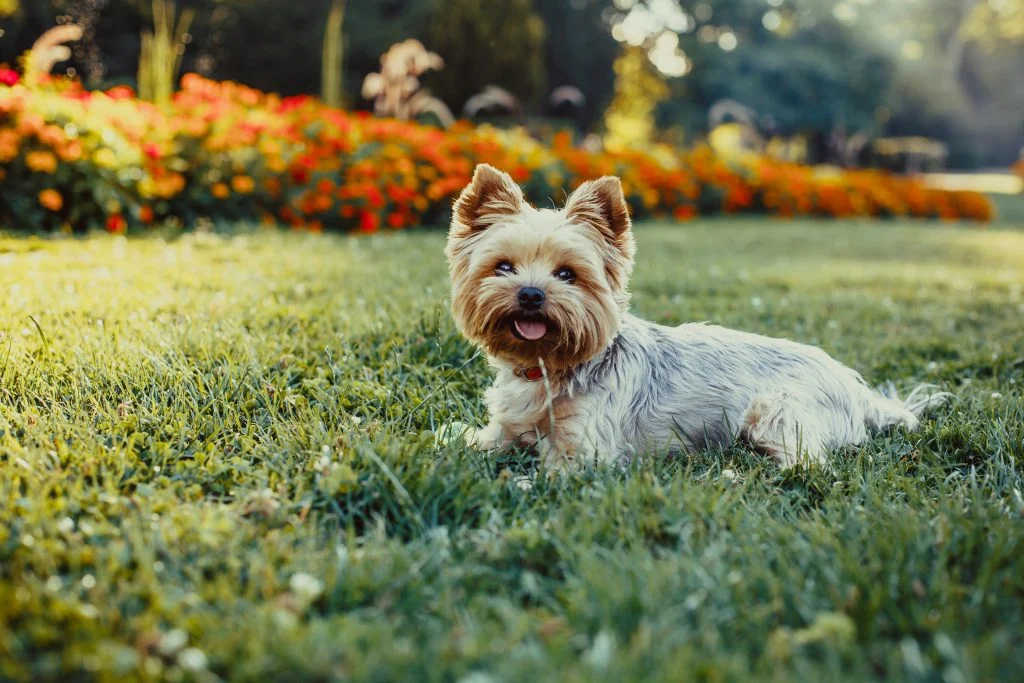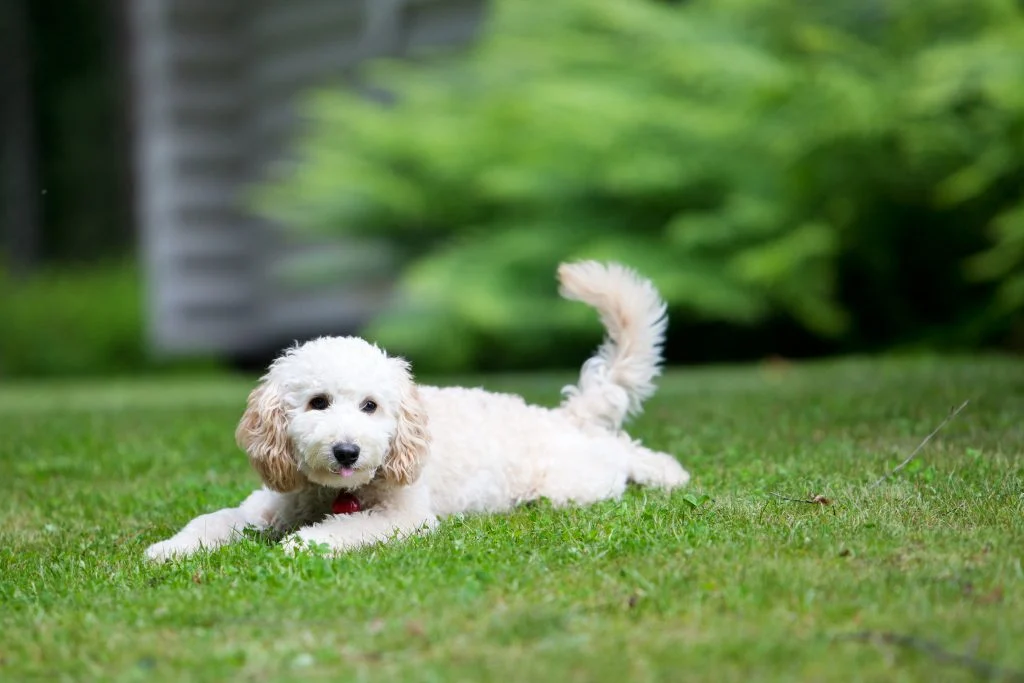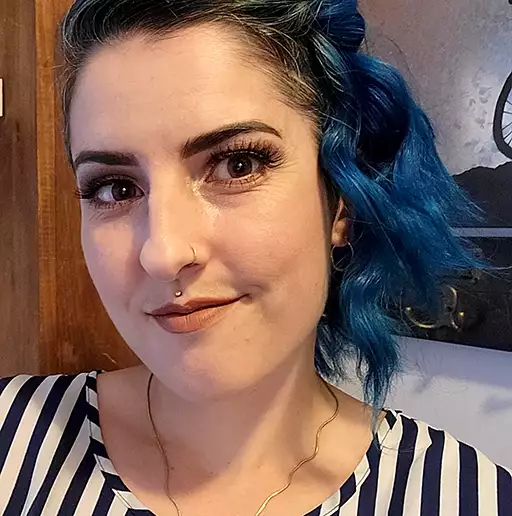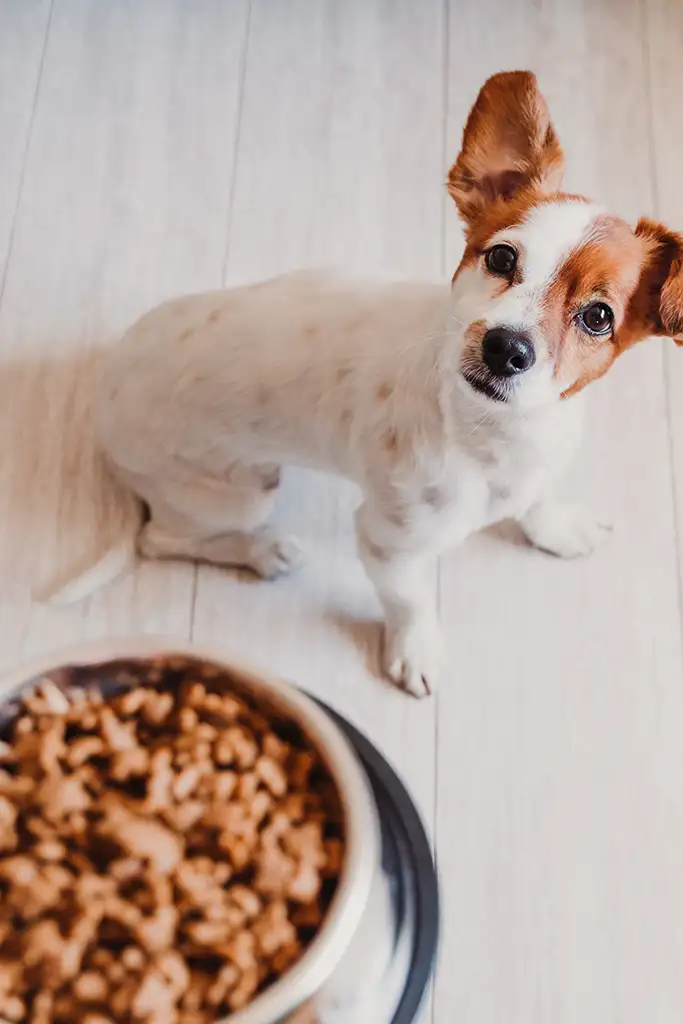Yorkipoo
Quick Guide
What Exactly is a Yorkipoo?
The Yorkipoo is a hybrid dog that results from the crossing of a purebred Yorkshire Terrier and a purebred Poodle.
The important thing to note about this breed is that the size is extremely variable depending on the type of Poodle used for the crossing.
Yorkipoos resulting from a cross of a Yorkshire Terrier and a Standard Poodle would be much larger than those resulting from a cross with a Miniature or Toy Poodle. It is very uncommon for Yorkipoos to be bred from Standard Terriers, however – crossings with the Miniature or the Toy Poodle are more standard.
Yorkipoos can be bred from a male and a female of either parent breed, though it is more common to use female Poodles and male Yorkshire Terriers because the Poodle is a little bit larger.
Because the genetics of a Yorkipoo can vary so much depending on breeding it is impossible to predict a Yorkipoo’s size, personality, or appearance until he matures.
Characteristics of a Yorkshire Terrier
The Yorkshire Terrier is a very small breed of dog that is often referred to as the Yorkie by breed enthusiasts. Though this breed may be small, he has a lot of energy and a big personality. Yorkshire Terriers are a smart and fun-loving breed that forms strong bonds with family, even to the point of becoming a little possessive and territorial around strangers. Yorkies have been known to stand up against other dogs much larger than them if they feel their human companion is being threatened and they have also been known to become the alpha dog in multiple-dog households, even if they are the smallest. One thing you may need to be wary of with this breed is the tendency to develop Small Dog Syndrome without proper socialization and training. These dogs may also be prone to separation anxiety if they don’t receive enough attention.
This breed was developed during the 19th century for the purpose of catching rats in clothing mills – the Yorkshire Terrier was also used in the sport of rat-baiting until it became more popular as a companion pet. The Yorkshire Terrier was developed in Yorkshire, England – hence the name of the breed. The origins of the Yorkshire Terrier can be traced back to three individual dogs, though researchers believe that the Paisely Terrier and possibly the Maltese were involved in the development of the breed as well. While the breed was in development there was no official breed standard, though dogs that had long blue-and-tan coats with trimmed ears and docked tails were generally referred to as Yorkshire Terriers. It wasn’t until the late 1860s that a specific dog was chosen to define the standard type for the breed.
The Yorkshire Terrier was first brought to the United States in 1872 but they weren’t accepted for registration with the AKC until 1885. Throughout the 1900s the Yorkshire Terrier remained a popular companion pet for English nobility and the American upper class. It fulfills a similar role today and it is consistently ranked among the top 10 breeds in the U.S. according to AKC registration statistics each year. There are many reasons why the Yorkshire Terrier is such a popular breed. One important reason is its size and low exercise requirements – this breed is perfect for apartments or urban life. The Yorkshire Terrier is also a very attractive breed with its long, flowing coat. The length of its coat does, of course, correlate with higher maintenance requirements.
What many people do not know about Yorkshire Terriers is that while the blue-and-tan appearance of the breed is standard, the puppies are not born that way. Yorkshire Terrier puppies are all-black when they are born and the blue-and-tan coloration develops over time. The Yorkie’s coat is very long and silky with a fine, glossy texture. The coat is generally silver-blue, dark gray, or near-black from the base of the neck to the base of the tail and it is parted down the middle. Most Yorkies exhibit tan coloration on the face, chest, and legs. Though the Yorkshire Terrier doesn’t shed as much as most breeds it still requires daily brushing as well as frequent bathing and trimming to keep its coat in good condition. Another benefit of the Yorkshire Terrier is the fact that it is a “hypoallergenic” breed which simply means that it is better for allergy sufferers than many other breeds.
In terms of its temperament, the Yorkshire Terrier is a lively and energetic little dog. These dogs form strong attachments to family – particularly one member of the family – and they require a lot of attention. This breed is fairly smart and it can respond well to training if you are firm and if you offer plenty of praise and rewards for motivation. Like many small-breed dogs, housetraining can sometimes be a challenge with this breed but if you are consistent you will be successful eventually. The Yorkshire Terrier can sometimes be a little bit yappy and it might be wary around strangers – these dogs also do not tend to take well to children, especially young children who do not know how to handle the dog properly. Yorkies can be kept in multiple-dog households, though they can be a little dominant and aggressive toward other dogs.
The Yorkshire Terrier is a fairly healthy breed and it has a long lifespan. This breed remains very small, standing just 8 to 9 inches tall and weighing between 4 and 7 pounds. In terms of health problems, the Yorkshire Terrier is prone to many of the same conditions you would expect from a small-breed dog – things like dental problems, eye problems, and musculoskeletal issues. Other problems to which this breed is prone may include collapsed trachea, patellar luxation, portosystemic shunt, hypothyroidism, and hypoglycemia.
You may like to Read about Chorkie
Characteristics of a Poodle
The name Poodle is given to a group of three dog breeds which includes the Standard Poodle, the Miniature Poodle, and the Toy Poodle. These are the three varieties accepted by the AKC, but the FCI recognizes four different sizes – the addition size is medium, between the Standard and the Miniature Poodle. The Standard Poodle stands over 15 inches tall and weighs between 40 and 55 pounds at maturity. The Miniature Poodle is the next size down and it weighs between 12 and 15 pounds, standing about 10 to 15 inches tall. The smallest size is the Toy Poodle which weighs 5 to 10 pounds and stands under 10 inches tall. The main difference between the different types of Poodle is the size – most of the other qualities and characteristics are similar.
The Poodle is thought to have originated in Germany because its name has German origins – it is known in Germany as the Pudelhund. The exact origins of the breed are unknown, though it is believed that early Poodles were common on the European mainland during the 15th and 16th centuries, even though they didn’t make it to England until later. The Standard Poodle (the largest variety) was developed as a gun dog or water retriever for use in waterfowl hunting, particularly duck and upland bird hunting. This breed is known for its keen intelligence and trainability as well as its talent for swimming. The Poodle actually has webbed feet which improve its swimming ability, plus its curly coat is naturally water-resistant. During the 20th century, the popularity of this breed for hunting declined and it came to be known as a companion pet.
The Miniature Poodle is rumored to have been developed from a small terrier and a poodle. The ancestors of this variety were not used for retrieving but for truffle hunting. The Miniature Poodle’s small size made it the ideal dog for scenting and digging up truffles. In addition to being used for hunting truffles, the Miniature Poodle was also used as a circus dog – this is true of the Toy Poodle as well. All of the Poodle varieties are very smart and trainable so they can be taught to do a variety of different tricks. Plus, the Poodle’s temperament and personality lends itself well to performance. All three varieties of the breed are also popular companion pets because they are friendly and affectionate with family. Poodles are also smart and relatively easy to train, plus they do great around children.
Though the three different Poodle varieties differ in size, they all have a similar appearance. The most iconic part of the Poodle’s appearance is his curly coat. The coat is very dense and naturally curly but, unlike many breeds, it is a single rather than a double coat. The Poodle’s coat will keep growing if you do not trim it so most Poodle owners have their dogs groomed and trimmed every four to six weeks. What makes the Poodle unique is the fact that it sheds very little – this makes it great for allergy sufferers. The Poodle actually does shed, but most of the shed fur gets caught in the curly coat instead of falling to the ground. This is another reason why Poodles need to be groomed frequently. Many Poodle owners keep their dog’s fur trimmed short in a pet clip or puppy clip to make it easier to maintain. Poodles come in a wide variety of different colors including black, white, brown, silver, gray, apricot, cream, red, sable, and even some patterns like brindle and parti-color.
Yorkipoo Characteristics and Temperament
The Yorkipoo is often marketed as a “designer dog” when, in reality, it is a hybrid (also known as a mutt). Because the Yorkipoo is a cross between two different pure breeds it is difficult to predict what he will be like in terms of size, appearance, and temperament. Analyzing the characteristics of the two parent breeds will give you some insight into what the Yorkipoo could be like. For many people, the primary concern is size. As long as a Toy Poodle or Miniature Poodle is used in the crossing, a Yorkipoo will be a fairly small dog. This makes the breed a good choice for apartments and urban life. It is also worth noting that both parent breeds have fairly low exercise needs which is another bonus point for urban-dwelling dog owners.
Another characteristic that varies greatly from one Yorkipoo to another is the appearance. Poodles come in a wide variety of colors and patterns but Yorkshire Terriers have a standard blue-and-tan appearance with a silky coat that parts down the middle. The Poodle’s coat, on the other hand, is dense and curly. The main point of comparison between the two breeds in terms of their coat is the length – both breeds have the potential for their coats to become very long, though Poodle owners are more likely to clip the coat than Yorkshire Terrier owners. Given these characteristics, you can expect your Yorkipoo to have a fairly long coat that is likely to be curly or wavy – some Yorkipoo coats are straight, but it is less common. Yorkipoos come in a wide variety of colors and patterns. Yorkipoos do shed, but like Poodles and Yorkshire Terriers, they are a good choice for allergy sufferers.
In terms of personality, the Yorkipoo is generally a friendly and lively dog that forms close bonds with family. Depending which parent’s genes are more dominant, your Yorkipoo could have a slightly more reserved personality like the Poodle or the eager temperament of a terrier. For the most part, Yorkipoos are a little wary around strangers but they get along well with other dogs. Some Yorkipoos like children, though you may need to supervise the interaction to ensure the safety of everyone involved (children can accidentally injure a small dog like the Yorkipoo). Yorkipoos also inherit their intelligence from both parent breeds which makes them easier to train than many breeds. The key to success with training your Yorkipoo is to be firm and consistent, making liberal use of praise and reward as motivation.
The Yorkipoo is generally a healthy breed when bred responsibly, though there is always the potential for health problems. Many of the health problems you are likely to encounter as a Yorkipoo owner are related to the dog’s small size.
Small-breed dogs commonly experience dental problems because their mouths are so small and they often have musculoskeletal issues like patellar luxation. Both parent breeds are prone to hypothyroidism as well as various eye conditions. Your Yorkipoo could also develop more serious problems like Cushing’s syndrome or vonWillebrand’s disease.
Read More about Puggle
How Much Do Yorkipoos Cost?
When you start shopping around for a Yorkipoo you need to be very careful about breeders who market their puppies as “designer dogs”. This is a term that was developed by hobby breeders hoping to drive up the price of puppies that are technically nothing more than mixed breed dogs (also known as mutts). If you really want a Yorkie you should take the time to do some research to determine a fair price range and to find a quality breeder.
A fair price for a Yorkipoo puppy will fall somewhere in the range between the cost of a purebred Yorkshire Terrier and a purebred Poodle. Keep in mind that either Miniature Poodles or Toy Poodles can be used to breed Yorkipoos so these prices may vary. The average cost for a Yorkshire Terrier from an AKC-registered breeder is between $1,000 and $1,500 for a show-quality puppy and between $500 and $800 for a pet-quality puppy. Toy Poodles and Miniature Poodles generally sell for between $600 and $1,000 depending on the quality. Given this information, you should expect to pay no more than $1,500 for a high-quality Yorkipoo, though a price range between $500 and $1,000 is more acceptable.
What is a Yorkipoo’s Lifespan?
The Yorkipoo is a small-breed dog which means, in most cases, that it will have a fairly long lifespan. It is difficult to predict the lifespan of this breed, however, because it is a cross between two different breeds with two different lifespans. You also need to consider additional factors like your Yorkipoo’s health, diet, and activity level when thinking about his lifespan. In general, however, you can expect your Yorkipoo’s lifespan to fall somewhere within the average range for the Yorkshire Terrier and the Poodle. Yorkshire Terriers typically live for 12 to 16 years while Miniature and Toy Poodles live an average of 14 to 18 years. Given this information, you can expect your Yorkipoo to live somewhere between 12 and 18 years.
How Big is a Full-Grown Yorkipoo?
In the same way that it is difficult to predict a Yorkipoo’s lifespan, it is also hard to predict his size at maturity. Genetics can be very complicated and your Yorkipoo’s size will depend on the genetics he receives from his parents. Full-grown Yorkshire Terriers typically stand up to 9 inches tall and they weigh between 4 and 7 pounds. There are three different sizes of Poodle, though Toy Poodles and Miniature Poodles are most commonly used to breed Yorkipoos. The Miniature Poodle has an average height of 10 to 15 inches while the Toy Poodle stands less than 10 inches tall. Miniature Poodles weigh between 12 and 15 pounds while Toy Poodles weigh 5 to 10 pounds. Depending which type of poodle was used to breed your Yorkipoo, you can expect him to weigh anywhere between 4 and 15 pounds and to stand up to 15 inches tall at maturity. The only way to know his adult size, however, is to let him grow up.













